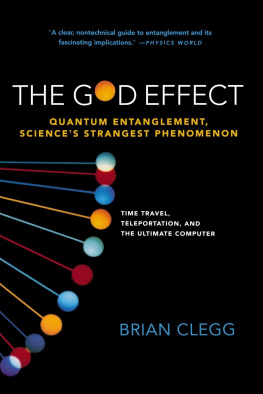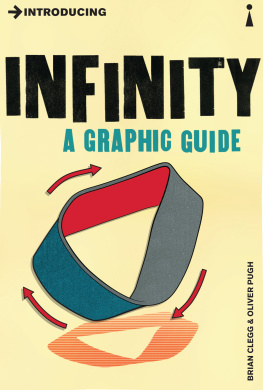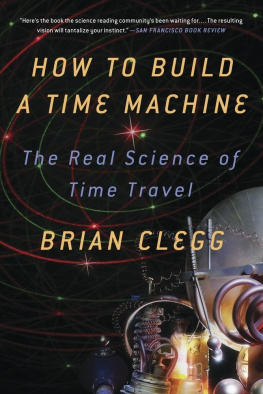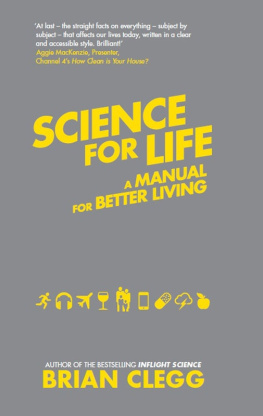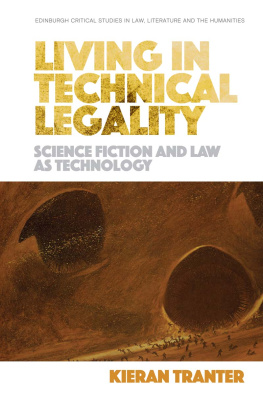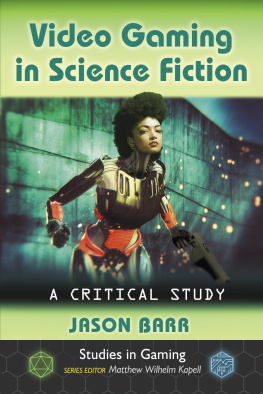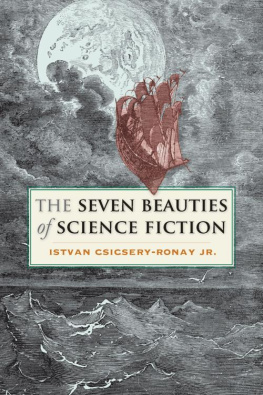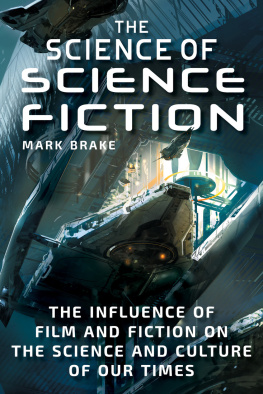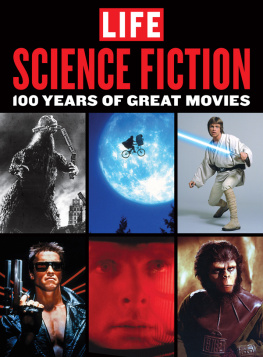Contents
Guide
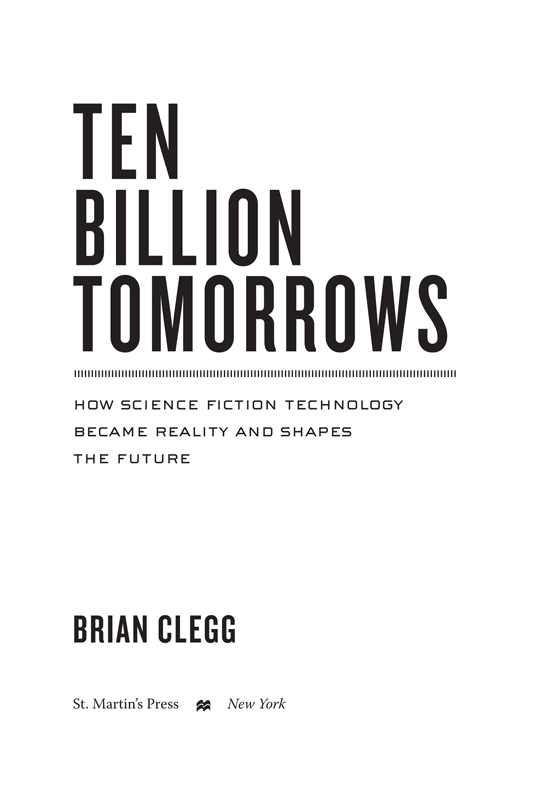
The author and publisher have provided this e-book to you for your personal use only. You may not make this e-book publicly available in any way. Copyright infringement is against the law. If you believe the copy of this e-book you are reading infringes on the authors copyright, please notify the publisher at: us.macmillanusa.com/piracy.
FOR GILLIAN, CHELSEA, AND REBECCA
My thanks to my editors, Michael Homler and Lauren Jablonski, and everyone at St. Martins Press who have made the book possible.
Although I must thank the academic writers, like philosophy professor Nick Bostrom, who have thought long and hard about the implications that changes in technology could have on society, I particularly have to think of the giants of science fiction who inspired me to get into science in the first place and who provided the inspiration for most of these chapters.
This list does include modern writers like Adam Roberts and the late, much lamented, Iain M. Banks, but primarily the thanks have to go to the classic writers who brought the field from pulp nonsense to the inspiring fiction of thought and speculation. So the ones I really need to mention are the likes of Isaac Asimov, Robert Heinlein, Frederik Pohl, Cyril Kornbluth, Alfred Bester, John Wyndham, Ray Bradburyand many more, who didnt just entertain but strived to make their readers think. And though TV and film science fiction is generally considered second rate by genre experts, it has had a huge cultural impactand so I have to also include the makers of the likes of Doctor Who, Star Trek, Star Wars, and The Matrix, among others.
Many scientists owe their careers to the inspiration of science fictionand the same goes for science writers. I would also like to particularly thank Dr. Peet Morris for the times that he has said, Have you thought of? and given me a whole new chapter to consider.
It was November 1963 and the future was scary and wonderful in equal measures. Science fiction told me so.
The whole world, it seemed, was reeling after the events in Dallas on November 22, 1963. But for me, as a young child, it was the following day that was far more significant. Because thats when the British TV show Doctor Who began. Later, the stories would be bolstered by real science that was amazing enough to be fiction, the kind of wondrous information that filled Carl Sagans Cosmos and astronomer Patrick Moores show The Sky at Night, then taken to a whole new fictional level by Star Trek . Thanks to science fiction, I knew what the future would be like. Like Howard Carter peering into Tutankhamuns tomb in 1922, I could see Wonderful things. And I devoured them wholesale.
Movies started to have an influence too, starting with old classics like Forbidden Planet and building to the awesome experience of first seeing 2001: A Space Odyssey . Then the books took hold. The first book I bought with my own money was H. G. Wellss The Time Machine . I still have that battered paperback. As it happened, I was disappointed with this particular tale. I didnt like the book at age elevenand I still find it tediousbut luckily, guided by my father, a lifelong SF enthusiast, visits to the library had by then already immersed me in science fiction adventures from the golden age. Asimov, Kornbluth, Pohl, Wyndham, Bester, Heinlein, Bradbury, and their ilk were my guides to a riotous, speculative future.
Before I go any further, in case you are science fiction fan, I ought to explain why I am going to occasionally use the term sci-fi.
Traditionally, those who read and enjoy science fiction have only accepted the abbreviation SF. Sci-fi, whether you pronounce it sky fi or sy fi has been frowned upon. (There was an attempt to take the term into the fold in an ironic way by pronouncing it skiffy and applying it just to TV and movie space opera.) Sci-fi was originally coined affectionately, probably by superfan Forrest J. Ackerman, to draw a parallel with hi fibut in practice it has mostly been used by the media, and particularly by those who dont understand the genre. However, I think it fits well with some of the subjects of this book, capturing as it does a slightly dated, but excitable, view of the topic, seen not so much from the viewpoint of fandom as in the eyes of the normal world, a world that was increasingly influenced by science fictions imaginings.
Back when I really had no idea what to call the genre, it was impossible not to get excited (and frightened) by the extremes of technology that we see in science fiction. Looking with mature eyes at the real future that came to pass, theres a tendency to be disappointed. We are well past 2001 now and we dont have regular flights to a Moon base. For that matter, we dont have flying cars and battles arent fought with ray guns or light sabers. But that misses the point of science fiction and its relationship with the world.
It is true that, very occasionally, science fiction has predicted something that then really happened. We often see references to Arthur C. Clarkes very accurate 1945 prediction of the geostationary communication satellite. Unfortunately, though Clarke was an accomplished science fiction author, this was a nonfiction article for the magazine Wireless World . There were also ion drives that propelled spaceships by repelling electrically charged particles in science fiction long before they became relatively commonplace as the thrusters used on real space vessels. And then there was the one-man prediction factory that was Herbert George Wells.
Impressively dramatic, and militaristic, predictions in science fiction came from that great pioneer of the field. Wells described the use of tanks in battles in The Land Ironclads, a story from 1903, thirteen years before the real tanks were first built. He denied that he had any great inventiveness in this, claiming that he merely adapted existing ideas like Leonardo da Vincis conical human-powered wheeled-and-armed vehicle. Then Wells came up with the idea of dropping bombs from airplanes, with his appropriately titled The War in the Air, published in 1908. Its true that there had already been bombs dropped from balloons, but here, just five years after the Wright brothers first powered flight, was some impressive insight into how this new technology could transform warfare.
However, it was with a little-known (and practically unreadable) 1914 book called The World Set Free, that Wells gave his most notable assessment of the future. Here, the remarkable imagination of this uninspiring-looking Englishman brings us a story of a future where artificial radioactivity is harnessed to produce electricity and eventually, in a war in 1956 between America, England, and France on one side and Germany and Austria on the other, the world comes to the use of terrible weapons based on nuclear energy, for which Wells invented the name atomic bombs. Thats enough to get the hairs on the back of your neck rising, especially bearing in mind that this premonition came from the man who wrote The Time Machine, which is written in the first person by the time traveler.
Just how remarkable The World Set Free is can be seen by putting the picture of the future it portrayed alongside a few realities from history. The concept of radioactivity only dated back to the turn of the century, and as late as 1933 Ernest Rutherford, a massive contributor to atomic theory, was quoted as saying, The energy produced by the breaking down of the atom is a very poor kind of thing. Anyone who expects a source of power from the transformation of these atoms is talking moonshine.


